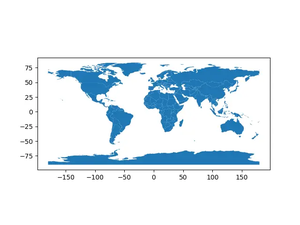Introduction
Working with time-series data often requires the application of various statistical operations to understand trends and patterns. One such operation is the calculation of a rolling weighted sum, which can provide insights by considering recent values more heavily than older ones. This tutorial will guide you through using Pandas to calculate the rolling weighted window sum on DataFrame objects. We will start with the basics and progressively dive into more advanced examples.
Getting Started
Before diving into the examples, make sure you have Pandas installed in your Python environment. If not, you can install it by running:
pip install pandas
Assuming you have Pandas installed, the first step is to import Pandas:
import pandas as pd
Basic Example
Let’s start with a basic example where we calculate a simple rolling window sum, upon which we will build more complex calculations:
data = {'values': [1, 2, 3, 4, 5]}
df = pd.DataFrame(data)
df['rolling_sum'] = df['values'].rolling(window=3).sum()
print(df)
Output:
values rolling_sum
0 1 NaN
1 2 NaN
2 3 6.0
3 4 10.0
4 5 12.0
Introduction to Weighted Rolling Window
A weighted rolling window assigns different weights to different values in the window, typically giving more importance to recent values. To calculate a weighted rolling window sum in Pandas, we use the apply() function along with a custom weighting function.
Creating a Simple Weight Function
Let’s implement a simple linear weight function where weights increase linearly with time:
def linear_weight(array):
weights = np.linspace(1, len(array), num=len(array))
return np.dot(weights, array) / weights.sum()
This function calculates the sum of the product of each element in the array and its weight and then divides by the total sum of weights. Note, you need to import numpy:
import numpy as np
Applying Weighted Rolling Window
Now, let’s apply this function to our DataFrame:
df['weighted_rolling_sum'] = df['values'].rolling(window=3).apply(linear_weight, raw=True)
print(df)
Output:
values rolling_sum weighted_rolling_sum
0 1 NaN NaN
1 2 NaN NaN
2 3 6.0 10.666667
3 4 10.0 12.333333
4 5 12.0 14.000000
Advanced Scenarios
As we delve further, it’s interesting to explore more complex weighting schemes, such as exponential weighting. Pandas includes an efficient function for this called ewm(), which stands for Exponential Weighted Moving.
Exponential Weighted Window
Here’s how you can apply an exponential weighted window sum:
df['exp_weighted_sum'] = df['values'].ewm(span=3).mean()
print(df)
Output:
values rolling_sum weighted_rolling_sum exp_weighted_sum
0 1 NaN NaN 1.000000
1 2 NaN NaN 1.666667
2 3 6.0 10.666667 2.428571
3 4 10.0 12.333333 3.266667
4 5 12.0 14.000000 4.161290
This output illustrates how recent values are given more weight, and the resulting sum adjusts more quickly to changes in the data.
Conclusion
Calculating the rolling weighted window sum using Pandas provides a powerful method to analyze time-series data, highlight trends, and smooth out noise. Whether using simple linear weights or applying exponential weighting, Pandas offers the tools needed to conduct these analyses efficiently. As we’ve seen through these examples, implementing these calculations is straightforward, allowing researchers and analysts to focus more on insights than on the intricacies of the calculation implementations.
